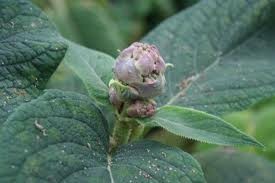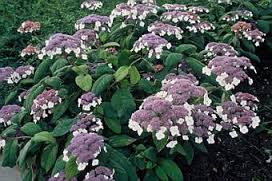
Woody > Hydrangea > Hydrangea aspera > Hydrangea aspera subsp. sargentiana
Hydrangea aspera
ssp. sargentiana
Sargent Hydrangea
Origin: Western Hubei province, China. Aspera means 'rough textured' and refers to the coarse textured leaves of the plant.
Mike's
Opinion


"
H. aspera subsp. sargentiana is a broad spreading, medium to large sized shrub with pale blue and pink flowers that contrast nicely against the dark green-grey foliage. The plant will reach full size under good growing conditions in about 10 years.
Michael Pascoe, NDP., ODH., CLT., MSc. (Plant Conservation)
"
| Family |
| Hydrangeaceae |
| Genus |
| Hydrangea |
| Species |
| aspera |
| Category |
| Woody |
| Type |
| Shrub (deciduous), Shrub (evergreen) |
| Subspecies |
| sargentiana |
| Synonyms |
| Hydrangea sargentiana |
| USDA Hardiness Zone |
| 7-9 |
| Canadian Hardiness Zone |
| 5a-8a |
| RHS Hardiness Zone |
| H3 – H7 (with some protection) |
| Temperature (°C) |
| -15 to 30 |
| Temperature (°F) |
| 5 to 86 |
| Height |
| 3 m |
| Spread |
| 2.5 m |
Photographs
Description and Growing Information
Flowering Period
| Cultivation |
| Grow in well drained but slightly moist soils in partial shade. |
| Shape |
| A broad spreading low growing shrub. |
| Growth |
| Fast |
| Habitat |
| Found in dense forests in valleys and mountain slopes at elevations of 700-1800 m. |
| Bark/Stem Description |
| The thick branchlets are covered with a dense, purple, semi-translucent, long, apically forked and acute hairs. |
| Leaf Description |
| The 9-30 cm long by 6-16 cm wide leaves are elliptic, oblong-ovate to broadly ovate. The leaves are grey-green abaxially but upon emergence may be purple; adaxially the leaves are dark green.The thin papery leaves are slightly curved, with 8-11 secondary veins on both sides of the midvein. Leaves have a rounded to shallow cordate base, an irregularly triangualr dentate to denticulate leaf margin and an acuminate apex. |
| Flower Description |
| The flowers are held in 10-16 cm wide corymbose cymes. The sterile flowers contain 4 obovate–orbicular to broadly orbicular sepals while the fertile flowers contain a campanulate calyx tube. The petals are purplish to blue-pink and are ovate. |
| Fruit Description |
| The fruit capsule is 3-4 mm in diameter with a truncated apex. The ellipsoid seed are brown, slightly compressed and winged at both ends with a striately veined seed coat. |
| Colour Description |
| Dark grey-green to light purple(emerging leaves) foliage, purple to purple-pink flowers and brown to purple-brown stems and bark. |
| Texture Description |
| Medium to coarse textured plant. |
| Notable Specimens |
| The Royal Botanical Garden, Burlington, Ontario, Canada. |
| Propagation |
| Softwood cuttings with bottom heat. |
| Ethnobotanical Uses (Disclaimer) |
| Used as an ornamental plant. |

